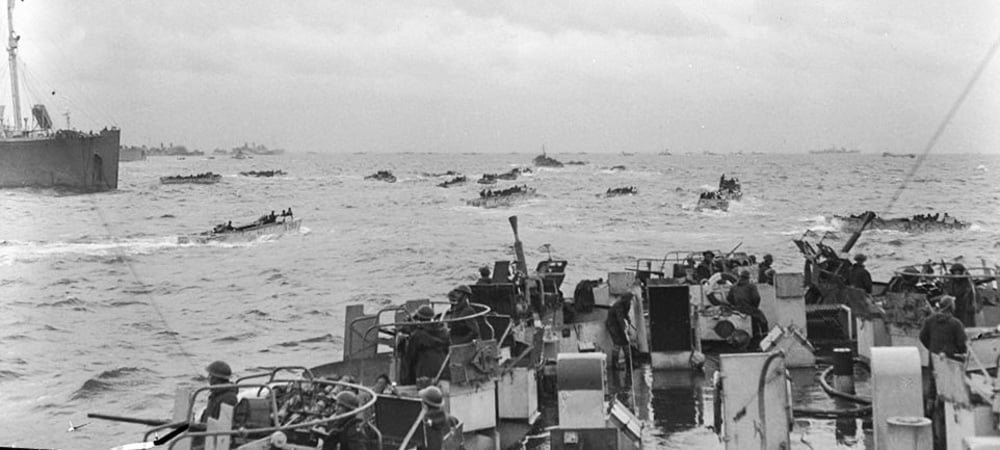This was a British conversion based on an LCT(3) or LCT(4), to provide additional anti-aircraft defences for the fleet. The LCT’s tank deck was decked over, with anti-aircraft guns placed on top. These craft were usually fitted with eight 20mm Oerlikon guns and four 2-pounder guns. The space below the gun deck was used for accommodation for the Royal Marine gun crews, as well as for ammunition storage.

Above: Landing craft of Force J pass an LCF (foreground). (Photo: A.O. Tate/Canada. Dept. of National Defence/Library and Archives Canada/PA-137007)
The craft were also used for fire support as the assault troops landed. Had there been significant return fire however, it was likely that there would have been many casualties amongst the gun crews who were in exposed positions.
Like the LCG(L)s, after D-Day the LCFs were used nightly to form the ‘Trout Line’. This was a defensive line of landing craft on the eastern side of the landing beaches to screen the anchorage against night-time attacks by E-boats, human torpedoes and other German small craft. On 17 August 1944, LCF 1 – the sole LCF(2) present – was sunk by a German explosive motor boat while on this duty, with great loss of life amongst the crew.